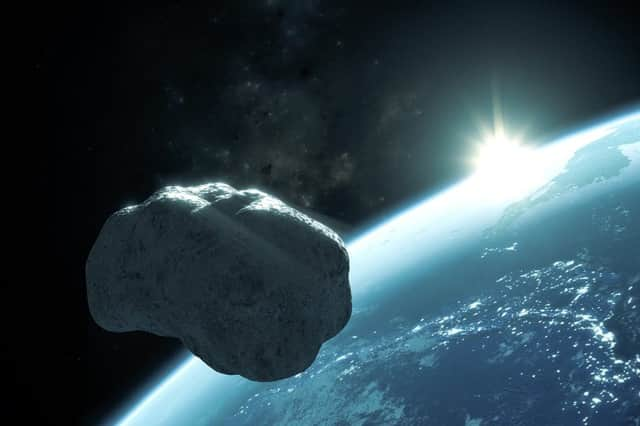An asteroid the size of a car narrowly missed the earth last week - and NASA ‘didn’t see it coming’


An asteroid the size of a car had a close call with earth, and the close encounter came as a complete surprise to NASA.
The asteroid, known as 2020 QG, is said to have narrowly missed the earth on Sunday 16 August, with just 1,830 miles separating it and the southern Indian Ocean. After the incident NASA admitted they “didn't see it coming.”
Advertisement
Hide AdAdvertisement
Hide AdPotential ‘fireball’
The US space agency explained that, had the asteroid been on a slightly different trajectory, it could have likely have become a "fireball" as it entered the earth's atmosphere.
However, while the asteroid was reported to be approximately the size of a car, this is considered as ‘small’ by NASA’s standards and was therefore unlikely to pose any real danger to our planet or its inhabitants.
Paul Chodas, director of the Centre for Near-Earth Object Studies (CNEOS) at NASA's Jet Propulsion Laboratory in Southern California was delighted by the discovery.
“It's really cool to see a small asteroid come by this close, because we can see the Earth's gravity dramatically bend its trajectory,” he said.
Advertisement
Hide AdAdvertisement
Hide Ad"Our calculations show that this asteroid got turned by 45 degrees or so as it swung by our planet."
How did NASA miss the event?
Bizarrely, the occasion was only picked up by the space agency after the event had occurred due to the direction from which the asteroid approached the earth.
Speaking to Business Insider, Chodas explained, “The asteroid approached undetected from the direction of the sun. We didn't see it coming.”
The asteroid was initially detected by the Zwicky Transient Facility in California, which holds a robotic telescope that scans the sky for asteroids and other moving objects. The image taken by this telescope was taken a full six hours after the asteroid reached its closest distance from earth.
Advertisement
Hide AdAdvertisement
Hide AdThe asteroid was reported to measure anywhere from three to six metres wide and was recorded travelling at roughly 27,600mph which equates to nearly eight miles a second.
How many asteroids have close encounters with earth?
It's not a rare occurrence for very small asteroids to make contact with earth every year.
However, an asteroid the size of 2020 QG would pass less regularly, only a couple of times per year, on average.
Since 2005, US congress has required NASA to vigilantly search the skies for possible threats in the form of asteroids and comets. However, NASA is only required to detect 90 percent of space rocks which measure over 140 meters (460 feet) - dramatically larger than 2020 QG - in diameter.